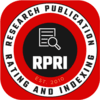A worth remembering Pepper Queen: Chēnnabhairādēvi
Keywords:
Queen Chēnnabhairādēvi, pepper trade, Gērusoppa, Hāḍuvaḷḷi, Bhaṭkaḷ ‘Reyna da Pimenta’Abstract
This research article aims to highlight the achievements of Queen Chēnnabhairādēvi who is unfamiliar to most people but worth remembering, ruled a small principality for a long time in a very commendable manner. She ruled the Sāḷuvas of Nagire (Honnāvar taluk in Uttara Kannada district) and Hāḍuvaḷḷi (taluk in Uttara Kannada district) principalities unitedly. Her achievements have been assessed by examining primary sources such as inscriptions, Portuguese accounts, works of court poets, and secondary sources. Examined sources show that her political struggles, commercial policies, cultural advancements, and conflict with the Portuguese made her one of the finest queens of Karnataka and India has ever seen. Portuguese addressed her ‘‘Reyna da Pimenta’’, the pepper queen.
References
Primary Sources:
Annual Report of Indian Epigraphy, 1965-66.
Annual Report of South Indian Epigraphy. 1929-30.
Annual Reports of Archaeological Department, 1928. Mysore.
Artur Teodoro de Matos & Maria do Carmo Jasmins Dias Farinha. (1880). Documentos remetidos da India, ou, Livros das Monções (1625-1627). Vol I. Translated by Raymundo Antonio de Bulhão Pato. Royal Academy of Sciences of Lisbon.
Botelho Simao, (1554). O Tombo do Estado da India. Published by Felner, R. J. de Lima in 1868. Lisbon.
Buchanan Francis. (1807). A Journey from Madras through the countries of Mysore, Canara, and Malabar. Vol. III. London.
Grey Edward. (1892). The Travels of Pietro Della Valle in India. Vol.II, (Translated by G. Havers) Hakluyt Society. London.
Kamath Suryanath U. (1985). Karnataka State Gazetteer: Uttara Kannada District. Govt. of Karnataka, Bangalore.
Karnataka Inscriptions Volumes, I & III, part I. K.R.I., Dharwad.
Kavi Liṅgaṇṇa. Edited by R. Shama Sastry. (1921). Keladinripa Vijaya. Government Branch Press. Mysore.
Rivara J.H. Da Cunha. (1861). Archivo Portuguez-oriental, Fasciculo III, pt. I, Nova Goa.
Sousa Manuel de Faria Y. (1674). Asia Portuguesa. Vol. II. Lisbon.
South Indian Inscriptions Volume VII. Madras.
Secondary Sources:
Bhatt, P. Gururaj. (1975). Studies in Tuluva History and Culture (from the pre-historic times up to the modern), Kallianpur, South Kanara.
Danvers Frederick Charles. (1894). The Portuguese In India, Vol. I, Asian Educational Services. New Delhi and Madras.
Gouda Ganapati. (1993). Minor dynasties of Uttara Kannada region (unpublished thesis), Karnataka University. Dharwad.
Hampana Kamala. (2011). Mahamandaleshwari Rani Chennabhairadevi Mattu Itara Karavali Raniyaru. Sapna Book House. Bangalore.
Heras Henry. (1927). The Aravidu Dynasty of Vijayanagara, Vol. I, B. G. Paul & Co. Publishers, Madras.
Madhava K G Vasantha. (2016). Political History of Canara 1565-1763 AD (Mainly Based on Inscriptions) unpublished Ph.D. thesis. Karnataka University Dharwad.
S. Krishna Swamy Aiyangar. (1919). Sources of Vijayanagar History, University of Madras.
Shastry B.S. (1969). The Portuguese in Kanara. An unpublished Ph.D. thesis submitted to the Bombay University Bombay.
Downloads
Published
How to Cite
Issue
Section
License
Copyright (c) 2024 AKSHARASURYA

This work is licensed under a Creative Commons Attribution 4.0 International License.








